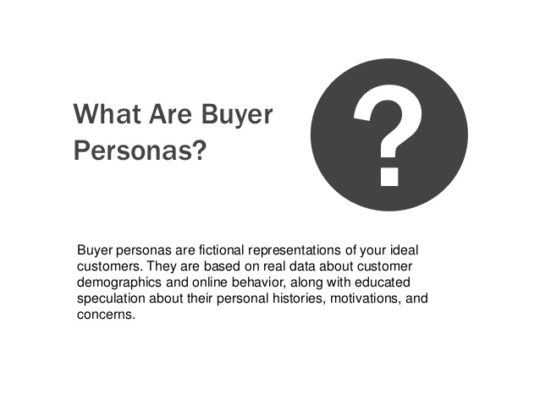Share this
Creating A Winning B2B Sales Playbook in 2026 [Step-by-Step Guide]

Playbook users report 15% more sales reps achieving annual quota, compared to non-adopters. (HubSpot)
Possessing a robust B2B SaaS sales playbook is a crucial element for the success of any inbound sales initiative, particularly for B2B organizations striving to boost profitability and sustain growth.
Equipping your sales force with a well-defined B2B SaaS sales strategy playbook endows them with essential tools such as competitive battle cards, call scripts, email templates, and strategic positioning guides. This ensures consistency and effectiveness in interactions with potential clients and existing customers.
Below are high level benefits of investing time in refining your companies B2B SAAS sales playbook:
- Increase your win rate with more effective messaging in your B2B playbook
- Implement guard rails around the sales-ready messaging throughout your B2B sales Hubspot playbooks
- More deals done, faster, with a proven process that works
- Standardize closing techniques used by the best salespeople in the world
- Eliminate guesswork and increase confidence when it comes time to close a deal
Even if you hit success in a given month, you won’t be able to repeat sales it if you don’t know exactly which steps you took. This guide will help your sales team create a highly effective B2B sales playbook framework. so you can increase leads, sell more, and skyrocket your revenue.
What is a B2B SaaS Sales Playbook?
A sales playbook is a document that outlines the key steps salespeople need to take in order to close deals. The sales playbook should include information on the buyer persona, the sales process, and the various sales strategies that can be used.
The B2B sales playbook is a specific type of b2b sales playbook that is designed for businesses that sell to other businesses. The B2B SAAS sales playbook should include all of the same information as a regular sales playbook, but it should also be tailored to the specific needs of b2b sales.
Some of the key components of a B2B SAAS sales playbook include defining the target market, creating a sales process, and how to use sale strategies.
Defining the Target Market
In order to create a successful sales strategy, you need to first identify your B2B target market. This includes understanding the needs and wants of your ideal customer.
Using Sales Strategies
Sales playbooks should outline the various sales strategies that can be used and when they should be used. There are a variety of sales strategies that can be used in order to close deals.
Sales playbooks can help salespeople close more deals by providing them with a step-by-step guide on how to successfully sell to their target market. A B2B sales playbook or B2B sales playbook pdf is specifically designed for businesses that sell to other businesses and should be tailored to the needs of those salespeople.
Creating a sales playbook is a great way to help salespeople close more deals. If you're not sure where to start, or if you want to make sure you include all of the key components, be sure to check out our sales playbook template. This template will help you create a sales playbook template that is tailored specifically for your business and your target market.
What Should a B2B Sales Playbook Include?
A sales playbook should include information relevant to the specific needs of B2B sales for a given business. Things that can be included may vary by business needs, goals, and industry.
An effective B2B sales playbook might include:
- Company overview: including the sales process, sales strategies, and sales tools that are available
- Product info: this could be a product sheet or data sheet that outlines what the product is, how it works, and what benefits it provides
- Industry research: this could be an analysis of the industry landscape, trends, and other relevant information
- Competitive analysis: a review of the competition, their products, their sales strategies, and how they compare to your own business
- Customer persona: a description of your ideal customer, their needs, their wants, and how your product or service can meet those needs
- Sales process overview: a step-by-step guide on how to successfully sell to your target market
- Sales strategies: an overview of the various sales strategies that can be used in order to close deals
- Playbook Goals and KPIs: an outline of the goals and KPIs for the creating a sales playbook template, so that you can track and measure success
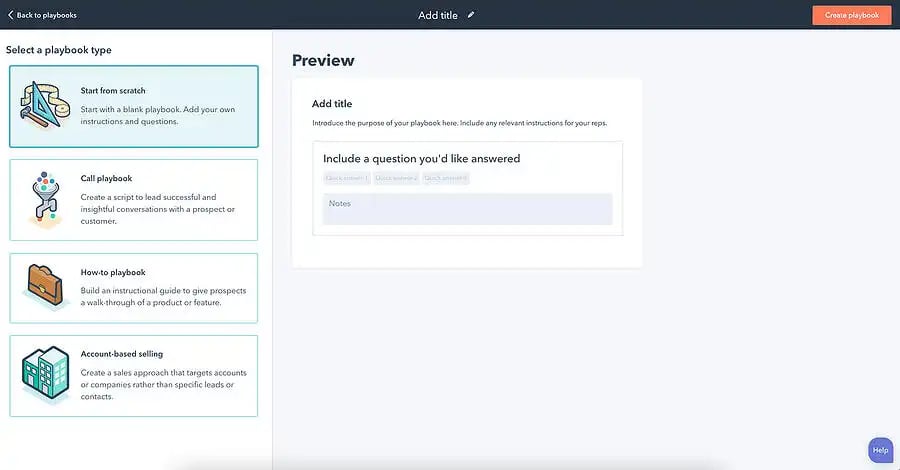
The problem becomes even larger when you take sales digital technologies into consideration. Back in the day, it was only about sending sales letters and making calls. Now it’s a lot different. There are so many different factors that influence your sample sales playbook strategy and its implementation and long-term execution.
Leveraging B2B sales playbook software only way to pre-plan your moves and execute them effectively.
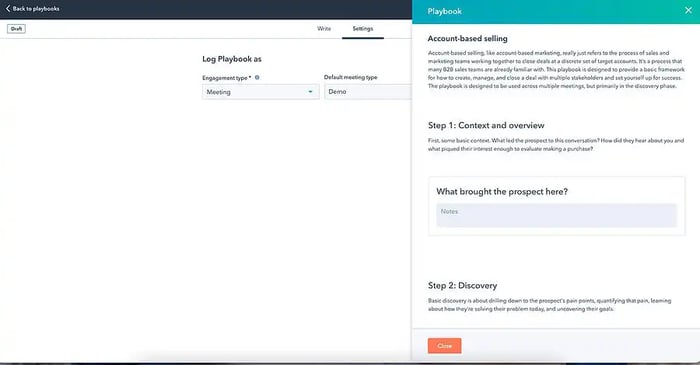
Mastering the creation of a B2B sales playbook framework doesn't imply rigidity in planning or execution. Modern sales play operations demand adaptability, scalability, and a departure from outdated, linear methods. The focus now is on establishing achievable sales goals using principles of agile B2B sales playbooks, rather than adhering strictly to pre-established formulas.
Furthermore, analyzing past sales playbooks and revenue patterns can significantly enhance your B2B sales playbook framework. Developing a digital sales playbook template can be instrumental in bolstering the precision of pipeline forecasting.
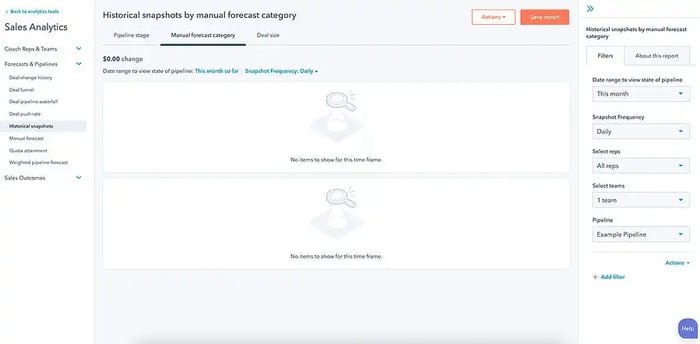
What are the five typical stages of a B2B sales process?
Before you can make an effective sales playbook, you have to really understand what the typical stages of a B2B sales process are.
1. Prospecting
The first stage of the B2B sales process is prospecting, which involves generating leads and identifying potential customers. This can be done through various means such as online research, attending trade shows, or networking.
Sales prospecting can be a difficult and time-consuming task, but it's essential for keeping your pipeline full of qualified leads. If you're not sure where to start, or if you're looking for ways to improve your prospecting skills, consider the following tips:
- Make sure you have a solid understanding of your target market and ideal customer profile. This will help you narrow down your search and focus your efforts on those most likely to buy from you. It’s important that you understand who your target market is and what they're looking for. By taking the time to research your market, you'll be able to create more effective sales pitches and messages that resonates with your audience.
- Draft a strong offer. Your offer is what will convince potential customers to do business with you, sales strategy playbook so it's important that it's strong and relevant to their needs.
- Make sure you clearly communicate the value of your offer, and be prepared to answer any questions that prospects may have.
- Build relationships. Don't just view potential customers as leads sales playbook framework - get to know them as people. By building relationships with your prospects, you'll be able to better understand their needs and create a more personal connection. Stay in touch.
- Stay in touch with your prospects even if they're not ready to buy right away. By keeping in contact, you'll stay top-of-mind when they are ready to make a purchase.
- Be persistent. Sales prospecting can be a numbers game, so don't give up too easily. It takes time and effort to build relationships and convert prospects into customers, so stay focused and persist through the challenges.
- Keep track of all the leads you generate, so you can follow up with them later. A CRM system can be helpful for this.
Following these tips, you can improve your sales prospecting skills and increase your chances of success.
2. Qualifying B2B Sales
Once potential customers have been identified, the next stage is qualifying them to see if they are a good fit for your product or service. This involves assessing their needs and budget to ensure that they are able to make a purchase.
- Ask lots of questions! The more you know about their needs, the better you'll be able to determine if they are a good match for your offering.
- Listen carefully to their responses and look for any objections or hesitation. This can give you clues as to whether or not they are truly interested in buying.
- Be sure to qualify each prospect individually, even if they come from the same company. Their needs may vary, and what works for one person may not work for another.
MQL vs. SQL:
At this stage of the process, you may hear the terms MQL (Marketing Qualified Lead) and SQL (Sales Qualified Lead) used. Essentially, an MQL is a lead that has been determined to be a good fit for your product or service based on their needs, budget, etc., whereas an SQL is a lead that has been further vetted by sales and is ready to move on to the next stage of the process.
Determining if they are a marketing qualified lead VS sales qualified lead will help you to know how best to proceed. From there, you can determine if they are ready to buy or if they need more nurturing before they are sales-ready.
3. Nurturing
If a lead isn't quite ready to buy yet, that's where the nurturing stage comes in. The goal here is to build relationships and trust over time so that when they are ready to make a purchase, they will think of you first. This can be done through things like educational content, targeted emails, or even just regular check-ins.
- Ways to Nurture Your Leads: 47.5% of marketers noted that email marketing was effective in reaching business goals- HubSpot.
- Email Marketing: Send them helpful information related to their needs, such as blog articles, eBooks, or even just tips and tricks.
- Personalized Content: Create content that is tailored specifically to their needs and pain points. This could be in the form of blog posts, webinars, or even just a dedicated landing page.
- Regular Check-Ins: Don't be afraid to reach out and touch base every now and then, even if they're not ready to buy yet. Just a quick check-in can go a long way towards building relationships.
4. Negotiating
Once a lead is ready to buy, it's time to move into the negotiation stage. This is where you'll work out the details of the deal, such as price, delivery date, terms, etc.
It's important to have a clear understanding of what the other side wants and needs. What are their pain points? What are their goals? Your sales playbooks or HubSpot playbooks should keep negotiations in mind.
- Don't be afraid to ask for what you want. The worst they can say is no.
- Be prepared to compromise. There may need to be given and take on both sides in order to reach an agreement.
- Always have a Plan B (and even C) in mind. If negotiations break down, it's important to have other options available.
5. Closing the Deal
Once an agreement has been reached, it's time to close the deal and make the sale. This is where all of your hard work pays off. All sales playbooks or HubSpot playbooks should go over how to effectively close the deal.
Ways to close the deal include:
- Get everything in writing. This could be a contract, purchase order, or even just an email confirmation. Having everything in writing will help to avoid any misunderstandings later on.
- Make sure that both sides are clear on what was agreed upon. There should be no surprises at this stage of the process.
- Get a commitment from the buyer. Whether it's a deposit, a signed contract, or even just a verbal commitment, you need to make sure that they are fully committed to going through with the purchase.
- Follow up after the sale. This is a good time to check in and see how things are going. It's also an opportunity to upsell or cross-sell additional products or services.
Post-Sale Service
The sale doesn't stop once the deal is closed. In order to turn a one-time buyer into a lifelong customer, it's important to provide excellent post-sale service. This could include things like product support, warranty service, etc.
Ways to provide excellent post-sale service:
Stay in touch. Check in every now and then to see how things are going. This is also a good time to upsell or cross-sell additional products or services.- Be available. If they have any questions or problems, make sure that you are available to help. This could be via phone, email, live chat, etc.
- Offer support. Whether it's product support, warranty service, or even just general advice, make sure that you are there for them when they need you.
The B2B sales process can be complex, but understanding each stage will help you to close more deals and build better relationships with your customers. Also, understanding each step and how the customer moves through the sales journey is critical to creating effective sales playbook HubSpot.
8 Steps To Follow When Creating A Sales Playbook
Step #1: Identify Your Rain Makers
Every business has its unique selling point, something that separates them from the competition. You should think about your selling point, and emphasize it, making sure buyers are aware of .
That unique selling point has to be your primary focus when trying to boost sales. It can be something completely unique, for example making custom-made birthday cake candles. Or it can be something about the way you operate—”wall painters that leave the floors stainless.”
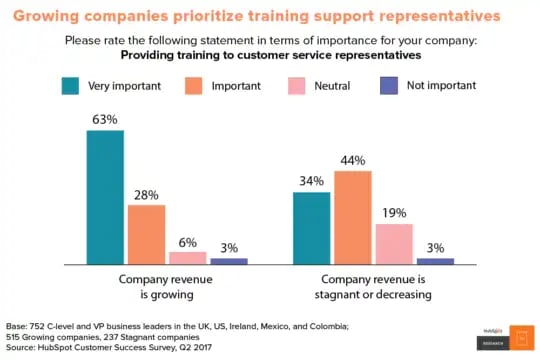
Identifying your selling point is a great first step. Once you have this critical component refined to your liking, focus your marketing and sales efforts will reduce friction in your overall sales process. Without an effective value proposition, your company not stand out within your industry and your ideal customers won’t have a reason to choose you over your competitors.
Step #2: Identify Your Target Customer
The next step is to identify your target customer and to create a detailed customer personas. If you want to sell, you have to understand your customer’s objectives and compelling pain points.
- Factors to bring up, in a given sales stage and how to weight those factors
- Save time by identifying your ideal customer profile for verticals and market cap
- Get laser focused on niche vernacular that aligns with how your ideal customer is thinking
- Understand what makes your target customer tick and effective probing to establish consequences of inaction
When creating a buyer persona, go in-depth. Think about your typical customer and note their key characteristics.
Here are some of the things to consider: gender, age, social background, education, relationship status, family status, employment status, average income. You can also think about their personal interests, hobbies, anything that characterizes them. After you figure that out, give your target customer a name.
Later on, when creating a sales funnel and scripts, think about the buyer persona, and whether or not he/she will like what they see. Make sure the answer is always positive, and that your wholesale technology and marketing process caters to the needs of your perfect customer.
Step #3: Standardize Sales-Ready Messaging
While you can scripts with exact steps your team members will follow in the sales process, or even go as far as giving them exact words they should say to potential customers, it is better to give them flexibility.
- Ensure all sales reps are delivering the same, consistent message to potential customers.
- Eliminate guesswork when determining what content needs to be created in order to start a conversation with a prospect.
- Create a library of pre-approved messaging that can be tailored for each individual prospect.
- Reduce time wasted on creating custom proposals and pitches.
The best sales SaaS marketing strategy playbook should serve as the scalable framework of all of the other scripts you are making. Your sales playbooks should implement pipeline management best practices, and the scripts should contain explanations for common scenarios or sales technology team roles.
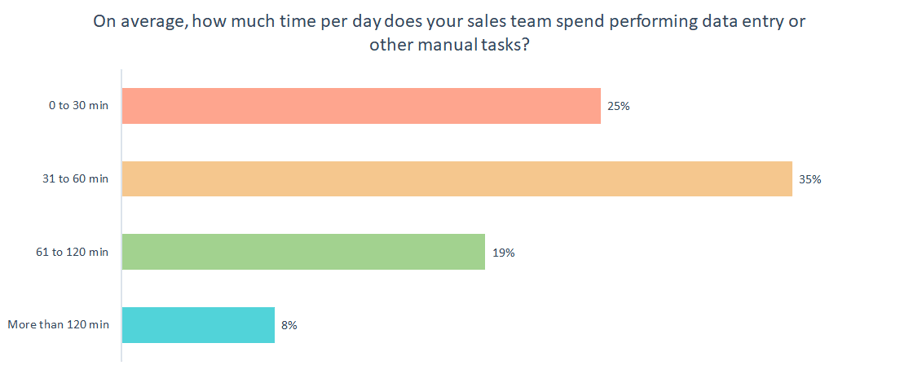
You want to make sure all of your team members and salespeople are on the same page and share the same goals. However, never try to be a control freak standing over their head non-stop.
It's beneficial to provide practical examples to your sales team. For instance, demonstrate an effective sales call or share sample emails from renowned copywriters. Alternatively, offer them recordings of successful in-person customer meetings. These real-life examples from the sales playbook can significantly reduce the learning curve, facilitating a smoother transition into the process.
Step #4: Prepare Relevant Enablement Resources
When your sales personnel get in touch with potential customers, they better be ready. Sales skills are sometimes enough, but more often than not, people will want proof.
- Save time by sending prospects only the relevant enablement resources they need
- Increase conversion rates by sending prospects content that is relevant to their stage in the buying process
- Differentiate yourself from the competition by sending prospects engaging and visually appealing content
- Effectively track opens, clicks, and downloads to see which resources are most effective
You want to have testimonials, case studies, references, or even offer free samples or trial versions of your products. By giving proof of the quality of your products and services, you will instantly gain trust. People are more likely to buy when they see that other people bought before them. So, whenever you make a sale, reach out to your customer, and ask them to leave a review. That will make future sales much easier.
Step #5: Raise Rep Compensation Incentives
First, your salespeople need to know exactly what they earn, you have to be transparent. But, they should also stay motivated to sell. In other words, you should offer them excellent bonuses. The following list outlines objectives and results for refining your B2B sales playbook example in order to:
- Sales reps will sell more product and reach their quotas
- Reps will be more likely to stick around when they are seeing financial benefit
- Easier to manage a quota-based system with software that can track actual performance
- Sales managers can see what works and replicate it across the team
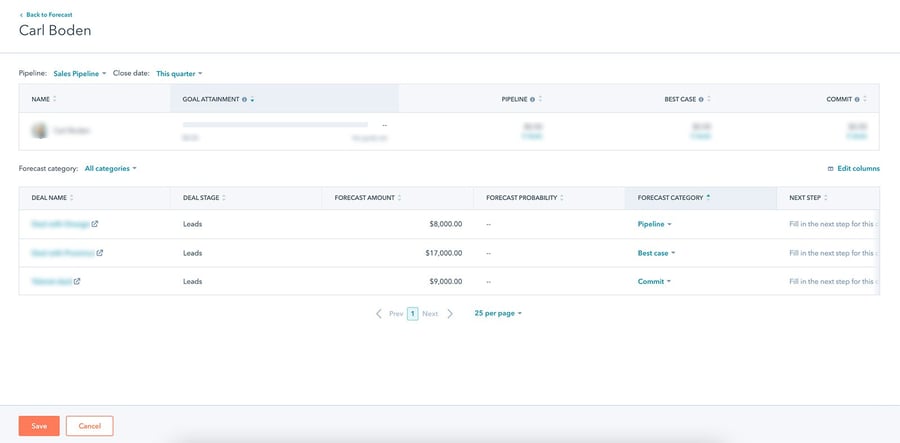
Put yourself in their skin, and try to give them reachable bonuses. Of course, don’t set the bar too low, but don’t make it impossible for them to earn more. You want them to keep trying and to improve steadily. They will earn more money, you will get more sales, a win-win situation.
Step #6: Synchronize Marketing & Sales Alignment
You hear it often: “Every B2B business should have an online presence” “You must have active social media accounts” “You simply must write a blog,” and so on. However, people often neglect the most important thing—what is the point of all that?
While B2B sales and marketing alignment may sounds like some over-hyped industry term, having your sales team vouch that the messaging your marketing team in marketing agencies is publishing aligns with the over arching messaging within your sales playbook.
- Get your entire sales and marketing team on the same page
- Ensure all messaging is consistent and accurate
- Create a repeatable process that generates results
- Eliminate guesswork when it comes to what works
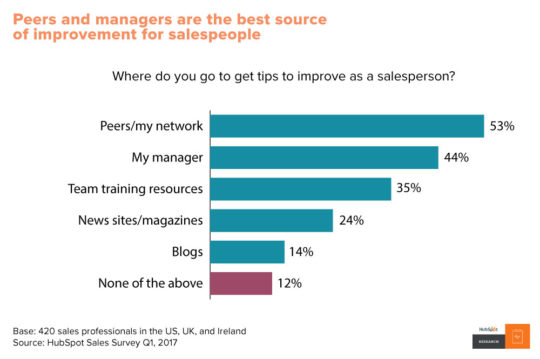
The point of it is driving more sales. Yes, some forms of marketing like blogs usually don’t directly lead to more sales, at least not in the short term. But they will help you build brand trust, which will eventually lead to more ideal customers coming your way.
Based on the type of service you provide, or the type of products you sell, you need to choose an approach that will show the most results, and focus on that. Every move you make when creating a digital playbook should be sales-driven. Never lose track of that; if you do, you are wasting time and money.
Step #7: Set Up B2B Lead Conversion Tracking
The whole point of your sales playbooks is driving more sales. However, there are other things to track that can provide useful information, and balance at the end of the month is not the only number that is viable.
For salespeople, you should aim for things like making calls per day, or emails sent. If you’ve never done this before, just start tracking everything, and after a while, analyze what people who made the most sales methodologies did. While you may be looking at dozens of reports, do you know how much money your top performing pieces of content generated last quarter?
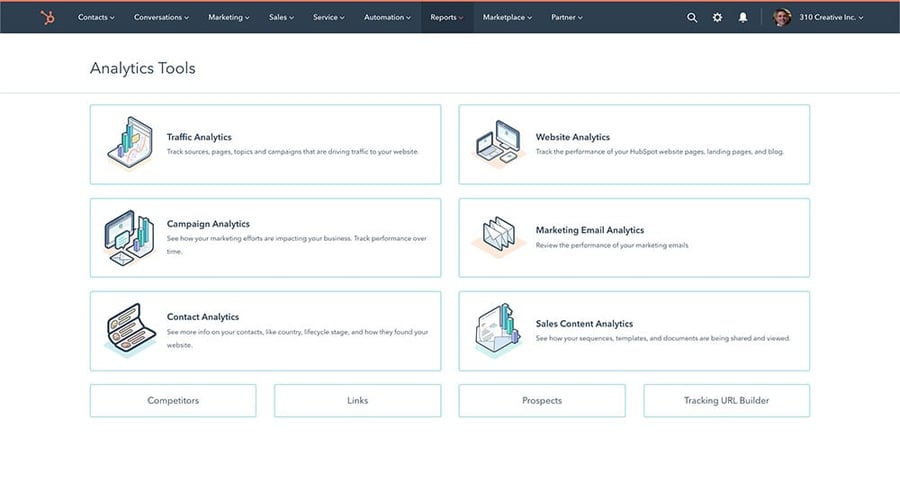
See what marketing channels are driving qualified leads
It's critical to determine what marketing channels are driving the most qualified leads to your business. Once you know which channels are performing the best, you can focus your efforts on those channels and continue to generate high-quality leads.
The first step is to set up lead conversion tracking. There are a few different ways to do this, but we recommend using Google Analytics. It's a free tool that provides valuable insights into your website traffic and conversion rates.
Once you have lead conversion tracking set up, take a look at your marketing channels and see which ones are generating the most leads. You can then focus your efforts on those channels and continue to drive high-quality leads to your business.
Track and attribute leads to b2b marketing campaigns
Lead conversion tracking is an essential tool for any business that wants to generate more qualified leads. By understanding which channels are most effective at driving leads, you can focus your efforts on those channels and continue to grow your business by focusing on these in your B2B sales playbook.
Optimize your B2B lead conversion funnel
Once you know which channels are driving the most leads, it's important to optimize your lead conversion funnel to convert as many leads as possible into customers.
There are a few key things to keep in mind when optimizing your lead conversion funnel:
- Make sure that your website is designed to convert visitors into leads. Your website should have a clear call-to-action (CTA) and lead capture form that's easy to find and use.
- Have your sales team follow up with leads in a timely manner. If leads are not contacted within 24 hours, they're much less likely to convert into b2b customers.
- Provide valuable content to leads throughout the sales process. This can help nurture leads and keep them engaged with your brand until they're ready to buy.
By following these tips and including them in your B2B sales playbook, you can optimize your lead conversion funnel and continue to generate more qualified leads for your business.
Understand which marketing channels are most profitable
Step #8: Never Stop Improving Messaging B2B Sales
Yes, your B2B sales playbooks should be able to withstand the test of time, but that doesn’t mean it is set in stone. Ideally, the criteria for your sales playbook should be conditioned for growth within your sales team over time. Additionally, set aside time monthly To measure the performance of sales messaging your sales team is leveraging inside your sales strategy playbook in order to continually refine your sales-ready messaging to continually improve lead to conversion rates
You should focus on developing the core, b2b evergreen strategies, and approaches. However, don’t be too rigid, and make slight messaging changes along the way, staying in line with the goal.
To increase the generation of qualified leads, it's crucial for B2B businesses to identify the most profitable marketing channels. Focusing efforts on high-performing channels can lead to a continuous influx of high-quality leads.
Here's a straightforward approach to determining which channels are most effective:
-
Evaluate Lead Conversion Rates: This metric reflects the proportion of leads that become customers. A higher conversion rate indicates a more profitable channel.
-
Calculate Cost Per Lead (CPL): This represents the investment required to generate each lead. A lower CPL suggests greater channel profitability.
-
Assess Customer Lifetime Value (LTV): This is the total revenue generated by a customer throughout their relationship with your business. Higher LTV indicates a more valuable channel.
After identifying the successful elements of these channels, integrate these insights into your inbound sales strategy. This can help your sales team improve the accuracy of sales cycle forecasts, increase forward momentum in the sales funnel, and boost overall lead-to-conversion rates.
Always track other key metrics like monthly sales growth, cost per acquisition, and average purchase value. However, it's imperative to utilize the data effectively. Mere collection of data is insufficient; actionable insights derived from this data are what truly drive business growth. Avoid gathering data for its own sake; focus on strategic implementation based on the insights gained.
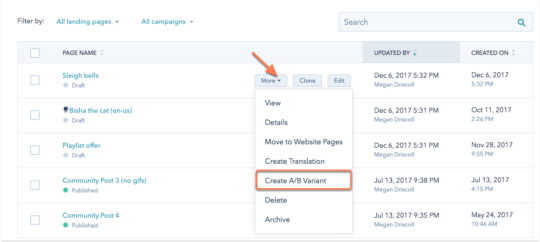
As long as you are making decisions that are goal-oriented, and you are doing them in a pre-planned way, you are good. If you notice something is hurting sales, ditch it. On the other hand, if you notice that a slight tweak in your sales letters made a significant response boost, include information in your playbook.
Always be open to new ideas, but also give your team enough time to test them. Don’t quit on something only because it didn’t work within the first week.
B2B Sales Playbook Takeaways
Our eight steps will help you create your own digital sales playbook that will help you drive more sales. Of course, in sales and marketing, nothing is guaranteed.
However, if you take a B2B healthy, step-by-step approach, you are much more likely to succeed. Effective Sales Playbooks help you build repeatable and scalable sales operations, and any system is a better option than taking random steps. Sales playbooks also keep your teams on the same page. This can help drive collaboration, innovation, and sales- as well as your bottom line.
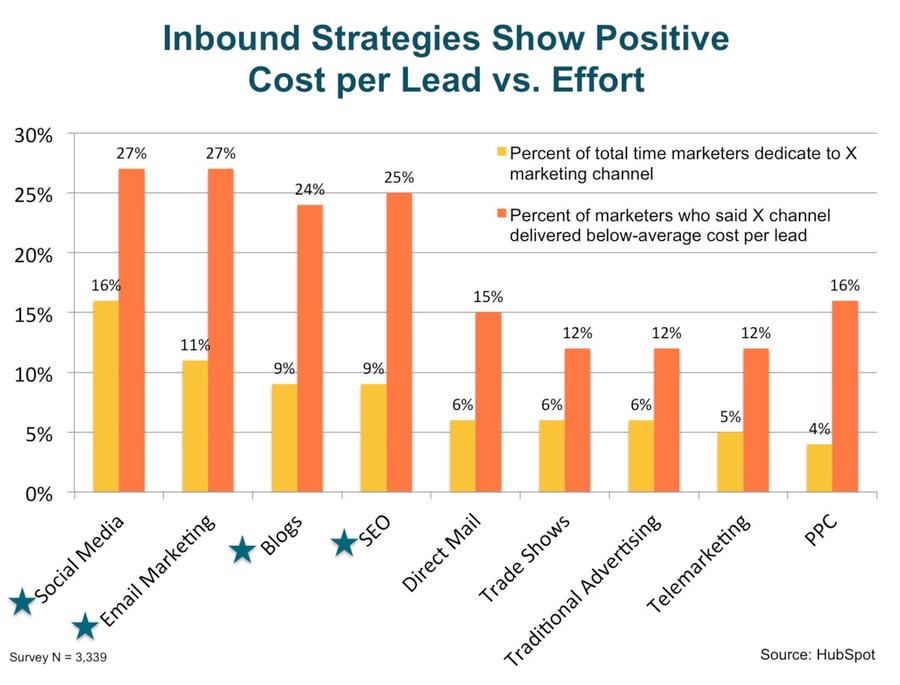
While your team may already utilize sales playbook software, data points, and processes, it's important to align your sales playbook implementation with industry best practices. This ensures you have a scalable and adaptable sales playbook software that can grow with your sales team.
Amidst the myriad responsibilities within your sales organization, refining your B2B company's sales playbook might not seem immediately pressing. However, dedicating time to this in the near future could significantly increase the number of deals closed in 2026.
Key benefits of refining your B2B sales playbook now include:
- Enhanced Sales Success Rate: Leverage our proven playbook strategies to improve your team's sales performance.
- Increased Lead Generation and Deal Closure: Follow our step-by-step guide to effectively capture more leads and secure more deals.
- Efficient Use of Resources: Avoid the pitfalls of starting from scratch by adopting our playbook, providing a direct route to success.
- Elevated Professional Reputation: Utilize our high-quality resources to bolster your team's expertise and credibility.
If you're uncertain about how to proceed, consider engaging an inbound sales agency. They can assess your company's existing sales playbook, offer practical advice for improvement, and present options for further assistance.
Share this
Subscribe
Recent Posts
Is your playbook not converting leads into sales?
Free Sales Playbook Assessment
We can help your company leverage HubSpot to build growth engines to create a predictable and repeatable stream of new leads, customers and revenue. Let’s talk and see how we can help convert more leads and increase revenue.

